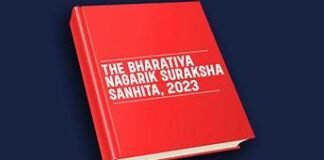Supreme Court splits on timeline for assessments under S.144C of Income Tax Act. Implications for foreign firms and tax experts explained.
The Supreme Court’s recent split verdict raises pivotal questions on how long tax authorities have to pass final assessment orders under Section 144C of the Income Tax Act, especially in transfer pricing and foreign company cases.
SC Divided on Limitation Period for Final Assessment Orders
On August 8, 2025, a two-judge bench of the Supreme Court delivered a split verdict on the key issue of whether assessment orders passed without following the Dispute Resolution Panel (DRP) process under Section 144C of the Income Tax Act, 1961, are valid if they breach the prescribed time limit.
The case involves the interpretation of whether the period prescribed under Section 144C—primarily designed for eligible assessees such as foreign companies or entities involved in transfer pricing matters—has been violated if an assessment order is passed without first issuing a draft order.
Background: What is Section 144C?
Section 144C provides a specialized process for assessment in cases involving eligible assessees, such as foreign companies and transfer pricing disputes.
Instead of issuing a final assessment order directly, the Assessing Officer (AO) must first issue a draft assessment order. The assessee then has the right to object before the Dispute Resolution Panel (DRP). Only after the DRP’s direction is received can the final order be passed.
This mechanism is crucial for protecting the rights of assessees and ensuring that large tax demands are not enforced without adequate scrutiny and redress.
The legal crux in this case was: If the AO skips the draft stage, and directly passes a final order — does that invalidate the order entirely, especially if the time limit under Section 144C is exceeded?
The Split Verdict: Justice A vs. Justice B
The Bench comprised Justice B.V. Nagarathna and Justice Sanjay Karol.
- Justice B.V. Nagarathna’s Opinion:
Held that failure to follow the 144C procedure (i.e., skipping the draft order stage) invalidates the final order. She emphasised that the timeline prescribed under Section 144C is mandatory, and non-compliance renders the final order time-barred and void. - Justice Sanjay Karol’s Opinion:
Disagreed, ruling that while procedural lapses under Section 144C are irregular, they do not necessarily make the final order void if the assessee has not suffered demonstrable prejudice.
As a result, the matter will now be placed before a larger bench to resolve the divergence.
Implications for Taxpayers and Foreign Firms
This ruling has stirred uncertainty within the international tax community, especially for foreign companies with Indian subsidiaries.
A split verdict means:
- Until resolved by a larger bench, assessing officers and DRPs lack clarity on how strictly the 144C procedure must be followed.
- Companies that have received final assessment orders directly, without draft orders, may challenge their validity.
- Ongoing or past assessments where the DRP route was bypassed may now face fresh legal scrutiny.
“Foreign investors rely on procedural safeguards like 144C to ensure fair treatment in cross-border taxation. This uncertainty may increase litigation risks,” said Amitabh Sinha, a tax policy expert and former IRS officer.
Legal Context and Reference
In previous rulings, courts have emphasised the mandatory nature of procedural safeguards under the Act. For instance, in Vodafone India Services Pvt Ltd v. Union of India, the Bombay High Court highlighted the jurisdictional defect arising from bypassing Section 144C.
Section 144C can be accessed here on the Income Tax Department’s portal.
What’s Next?
With the matter now heading to a larger bench, the ruling will be a landmark precedent shaping how procedural defaults under tax laws are treated. For tax professionals, this is a moment to revisit assessment strategies and review pending cases for procedural compliance.
Internal References for Further Reading:
External Resource:
📺 For expert discussions on tax law, follow The Legal Observer YouTube Channel





